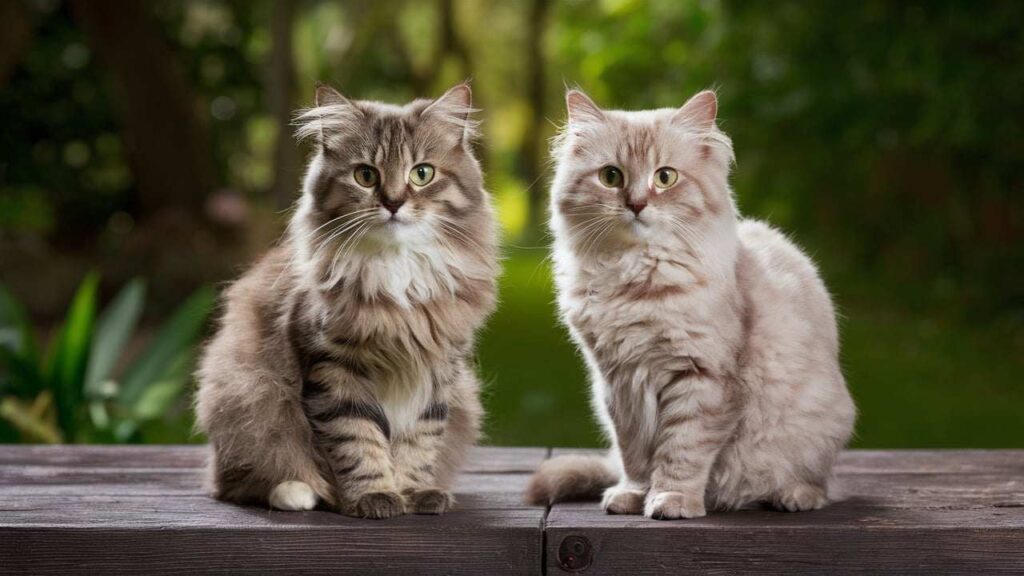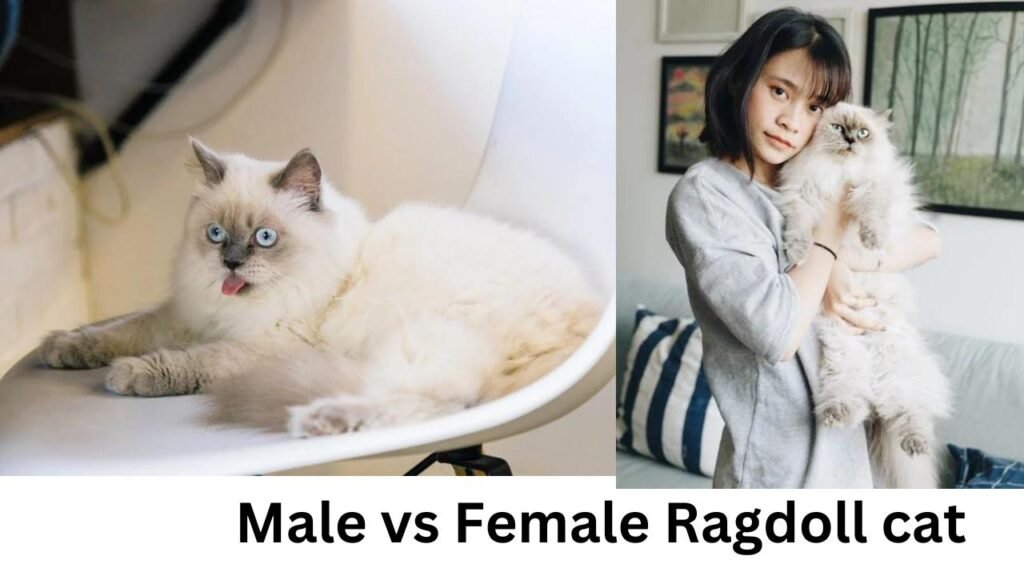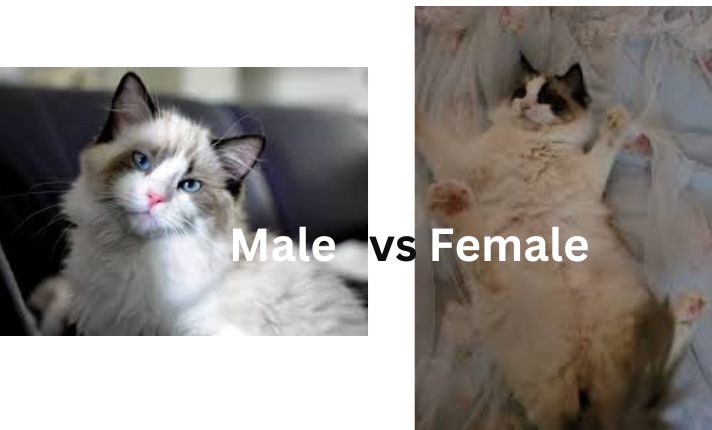Welcome to our guide on the key differences between male vs female Ragdoll cats. Ragdolls are a beloved breed known for their affectionate nature and beautiful appearance. However, when choosing a pet, you must understand their traits and behaviors. You need this to decide which gender is best for your home and lifestyle.
In this article, we will explore the differences between male and female Ragdoll cats. We will cover their size and personality traits. We will also discuss their health and how well they get along with other pets. By the end, you will understand how gender can impact if a Ragdoll cat is suitable for your family.
Visual Differences
| Differences | Male Ragdoll Cats | Female Ragdoll Cats |
|---|---|---|
| Size | 12-20 pounds | 8-15 pounds |
| Height | 9-11 inches | 9-11 inches |
| Personality | Affectionate, laid-back | Independent, reserved |
| Activity Level | Calm, lounges often | Playful, enjoys quiet time |
| Health | Prone to obesity | Less prone to obesity |
| Training | Easily trainable | Trainable, less enthusiastic |
| Family Friendly | Very family friendly | Family friendly |
| Maturity Rate | Full size at 3-4 years | Full size at 2-3 years |
Male and Female Ragdoll Cats: Physical Differences
Male Ragdolls are typically larger than females. Adult males weigh 12-20 pounds and stand 9-11 inches tall. Females weigh 8-15 pounds and are 9-11 inches tall. The size difference is visually striking. It also affects their appearance.
Coat: Another distinguishing feature is their coat. Both male and female Ragdolls have a plush, semi-long coat. But, intact males may develop an even more luxurious coat, especially around the neck. This thick ruff, or mane, adds to their regal appearance. However, this difference is less pronounced in neutered males.
Color: Interestingly, some color patterns are sex-linked in cats. Calico and tortoiseshell patterns are only found in female cats, while 80% of orange cats are male. This genetic quirk adds an extra layer of diversity to the Ragdoll breed.
Boning: refers to the thickness and density of a cat’s bones. Male Ragdolls typically have thicker, denser bones than females. This makes them larger and more muscular. Also, male Ragdolls tend to have a rounder, broader head. Females often have a more refined, wedge-shaped head.

Personality Traits Male vs Female Ragdoll Cats
When it comes to personality, male Ragdolls are often described as the “clowns” of the breed. They are known for being more affectionate, attention-seeking, and clingy compared to females. They thrive on constant companionship. They will often follow their owners around the house, seeking cuddles and play.
Males are usually more outgoing and sociable. They get along well with other pets, children, and even strangers. They are often described as “dog-like” in their friendly and approachable nature.
Female Ragdolls are also affectionate but tend to be more independent. They enjoy spending time with their owners but don’t require as much attention as males. Females are more likely to initiate cuddle sessions on their terms.
While friendly, female Ragdolls can be a bit more reserved, especially around new people or situations. They tend to be more cautious and may take some time to warm up to new environments or individuals.
Vocal Differences
Male Ragdolls tend to be more vocal and demanding. They meow more often to get attention from their owners. This can be compared to females. They are known for their clinginess and attention-seeking nature. They like to cuddle and are more sociable than females.
In contrast, female Ragdolls can be more subtle and soft-spoken. They rub against their owner’s leg or give them “puppy eyes” when they want something. They do this rather than meowing constantly. Females are calmer but aren’t as clingy and fussy as males.

Exercise & Care
Male Ragdolls tend to be more active and playful compared to females. They need more daily exercise to keep them physically and mentally stimulated. They need at least 20-30 minutes of playtime per day. Males are known for their agility and love of playtime. Both genders have similar grooming needs. They need regular brushing. Do it 2-3 times per week. They also need occasional baths, every 4-6 weeks. These keep their beautiful, soft coats looking their best.
Female Ragdolls are generally more mellow and less active. They have lower exercise needs and may be satisfied with shorter play sessions. Females are more adaptable and less demanding than males. Training a female cat to use a litter box might be easier. They are less stubborn and less vocal about their preferences.
Best For:
Male Ragdolls do best in homes where someone is around for most of the day, as they thrive on attention and companionship.
Females are a better fit for homes with busier schedules, as they are more independent and less clingy.
Choosing the Right Ragdoll for You
You select a male or female Ragdoll that fits your preferences and lifestyle. If you want a larger, more outgoing pet who craves attention, a male Ragdoll may be perfect. If you prefer an independent cat, she can adapt to busy schedules. A female Ragdoll could be the ideal choice.
Ragdolls are loving, gentle cats. They make great pets for any family, regardless of gender. Love and attention. Your Ragdoll will bring endless joy and friendship to your home. And, they will do so for many years to come.

Hey guys, My name is Simon Smith. I’m from Canada and live near Victoria
I live with my sweet family and have 20+ Ragdolls of different types. I love them as my own children. My profession is as a hotel manager.
I love to keep Ragdolls and grow their breeder case. I have 7 years of experience.
I’m an expert in cat care. So, I’m here to provide you with new information about my cats daily. This is my personal blog website, so I request that you kindly visit our site daily.
If you’re a Ragdolls lover and you have any questions or confusion about cats, text me on the Contact Us page or Gmail.
Thank u
